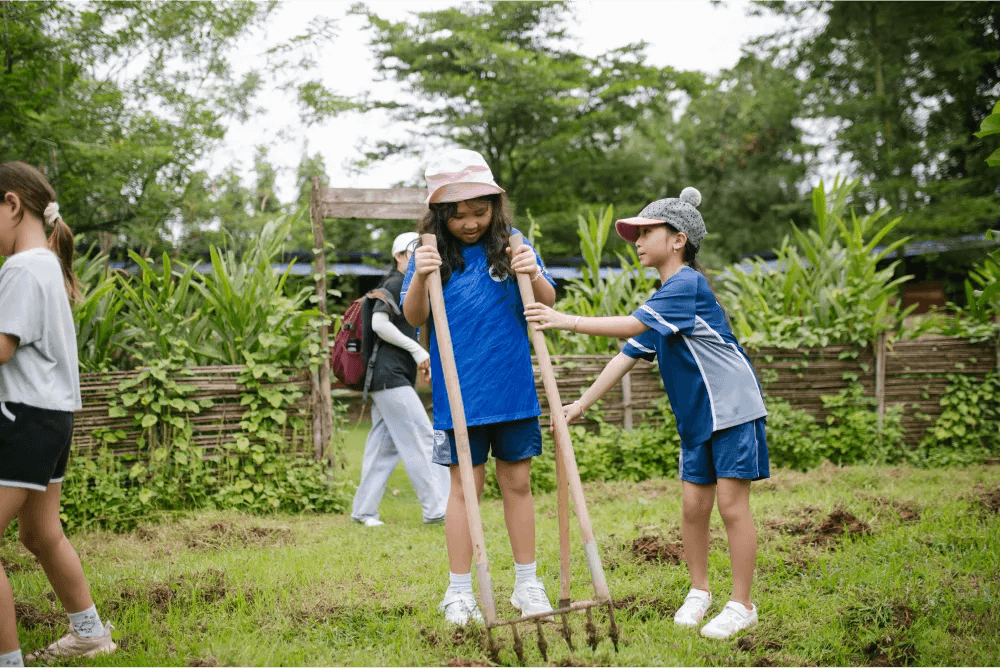Nature-Based Learning: Why It’s Essential in Early Childhood
Nature-based learning in early childhood integrates natural elements into lessons to foster a connection to nature, enhance environmental awareness, and support the comprehensive development of children. This article will explore the details of this method and provide specific applications to effectively bolster children’s future growth and development.
What is Nature-Based Early Childhood Education?
Nature-based learning (NBL) is a 21st-century educational method that connects children with the natural world. NBL supports children’s physical, emotional, cognitive, social, and environmental well-being, promoting a holistic approach to education.
Through hands-on exploration, this method stimulates curiosity, fosters critical thinking, and improves problem-solving skills. Children who play in green environments have been found to have reduced rates of anxiety, sadness, and attention deficit problems.
Additionally, outdoor activities can enhance cardiovascular health, coordination, and motor skills development. Nature’s rich sensory environment encourages imagination and creativity. NBL also prepares children with the knowledge and values needed for environmental stewardship and lifetime learning.
The method can take place in purely natural settings or in a built environment with added natural aspects. Nature-based learning in early childhood has been tested and recommended for more than two centuries. It is especially popular in forest kindergartens and is often designed for young children. Nowadays, with the rise of forums, conferences, and networks for educators and parents, interest in nature-based education is growing remarkably.
6 Benefits of Nature Based Learning in Early Childhood
The nature-based early childhood method has a significant influence on children, including:
- Enhance cognitive development
- Improve children’s academic performance
- Enhance children’s social development and foster social harmony
- Promote children’s mental and emotional well-being
- Boost children’s physical health
- Instill a sense of belonging and responsibility
Here are the merits regarding nature based learning in early childhood.
1. Enhance Cognitive Development
The positive impact of nature play on children’s cognitive development is undeniable. According to a Norwegian study, children who spend time outside in their daycare have better concentration spans and short-term memory (Ulset et al. 2017).
Interactions with nature restore the energy reserves of the executive attention processes. A Spanish study involving schoolchildren aged 7 to 10 discovered similar findings regarding the relationship between exposure to green spaces and cognitive development (Dadvand et al. 2015).
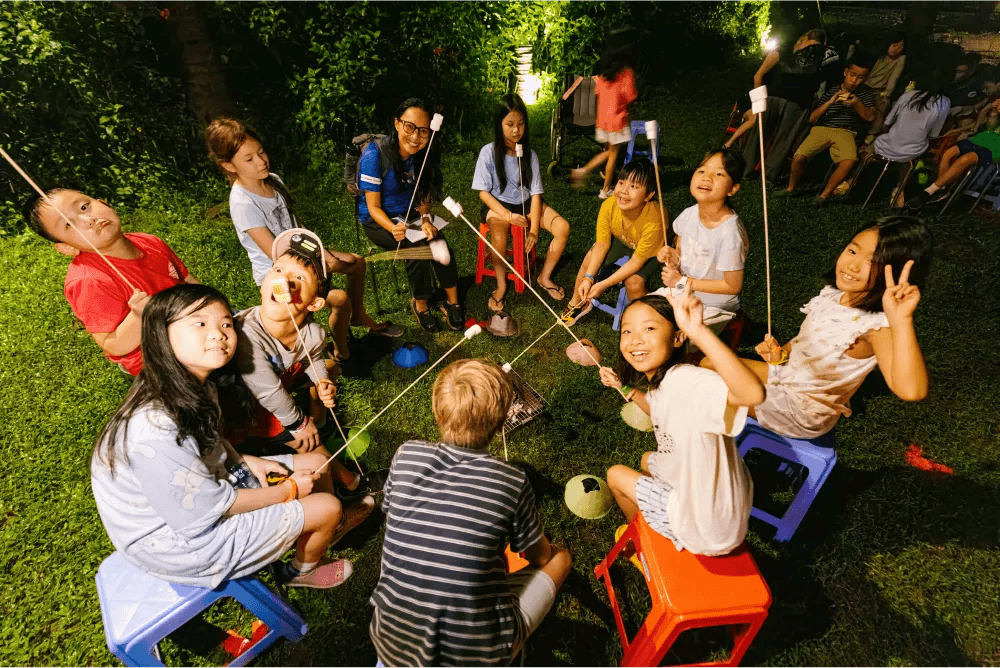
Nature’s restorative effects on the body’s depleted executive attention processes help prevent the symptoms of inattention and hyperactivity in children. Exposure to green spaces offers chances for kids to learn item classification, identification, and discrimination.
There are four factors that foster children’s creativity and imagination in natural outdoor classrooms:
- Consistent time
- Predictable spaces
- Open-ended materials
- Observant instructors.
2. Improve Children’s Academic Performance
The method of nature based learning in early childhood leads to higher levels of academic performance. The result is associated with exposure to green spaces around schools. It has been proven that outdoor learning improves academic achievement, particularly in children with less self-control.
According to a study by Kuo, Browning, and Penner (2018), comparing outdoor education to traditional classroom settings revealed that outdoor instruction significantly boosted student engagement. Additionally, redirections were notably less frequent during and after nature lessons.
Students who learn in nature tend to perform better academically, which may be explained by the real, less stressful learning environment that nature provides. Children from underprivileged homes who participated in a nature-based learning program for four years showed consistently higher academic performance and science understanding than the control group.

In a case study on preschoolers learning arithmetic in an outdoor setting, Miller, Tichota, and White (2014) found that outdoor classroom environments offered young children a potent framework for exploring, developing, and honing math skills. Simple exposure to green spaces around the school has been associated with improved academic outcomes.
Programs that emphasize nature-based learning frequently outperform control groups in terms of science and academic achievement overall. Young children can also explore and develop their math skills in a compelling setting offered by outdoor school environments and the natural world.
After controlling for demographic, socioeconomic, and school-level variables, Wu et al. (2014) found that third-grade kids in Massachusetts performed better on standardized English and arithmetic examinations when there were more trees and plants surrounding their schools.
3. Enhance Children’s Social Development and Foster Social Harmony
Outdoor learning enhances social relationships between children, teachers, and school communities by fostering unity and harmony among all members through educational activities in naturalized and outdoor environments.
Relationships between teachers and students have been found to have an impact on engagement and academic success, particularly for kids who have marginalized behavior and performance. Natural play settings enhance harmony beyond school, minimize competition, and promote kindness.
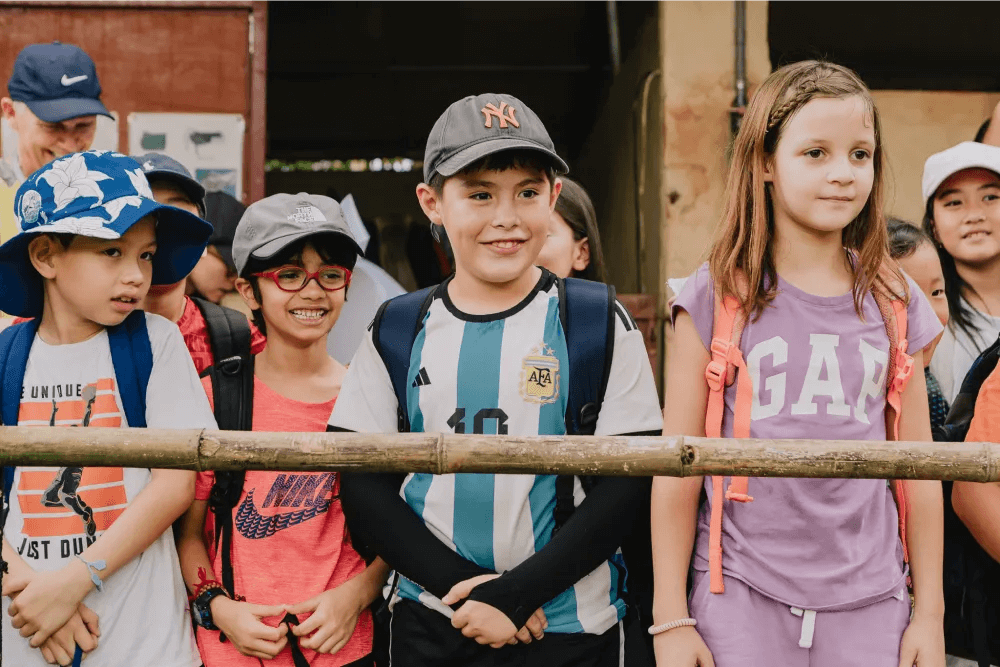
In many studies (Howes, 1988; Howes & Matheson, 1992; Drown & Christensen, 2014; and Giford & Chen, 2016), nature is proven to provide children with opportunities for dramatic social play that foster peer relationships and the social skills of cooperation, self-control, and altruism.
Unstructured play can often be more beneficial than organized activities when it comes to fostering interactions between people and the natural world. Skar et al. (2016) stated that by letting children play on their own terms and in one spot for longer periods of time, adults can facilitate the development of children’s relationships with each other and the natural world.
4. Promote Children’s Mental and Emotional Well-being
Studies reveal that kids who grow up close to serene, tranquil, and soothing green areas experience fewer emotional and mental health issues, greater emotional resilience, and less aggressive behavior.
Balseviciene et al. (2014), Flouri, Midouhas, & Joshi (2014), and Aggio, Smith, Fisher, & Hamer (2015) all concluded that children who live close to green areas experience fewer emotional and mental health issues, have greater emotional resilience, and exhibit less aggressive behavior throughout their adolescent years.
According to Hanson et al., 2016, childhood stress can impact cognitive development and lead to mental health issues later in life. Increased time spent in nature can have psychologically restorative effects and potentially long-term impacts on children’s mental health. Thus, the more time children spend in nature, the more it may help them reduce stress and encourage focus.
5. Boost Children’s Physical Health
A sedentary lifestyle and overusing electronic devices are the main causes of the health decline in children. Studies indicate that natural elements in school settings can positively impact children’s physical well-being. Outdoor environments help enhance motor skills and improve sleeping quality.
Engelen et al. (2013) discovered that adding loose materials to traditional playgrounds greatly enhanced the quantity of MVPA that children aged 5 to 7 received during break times, and the advantage can last longer.
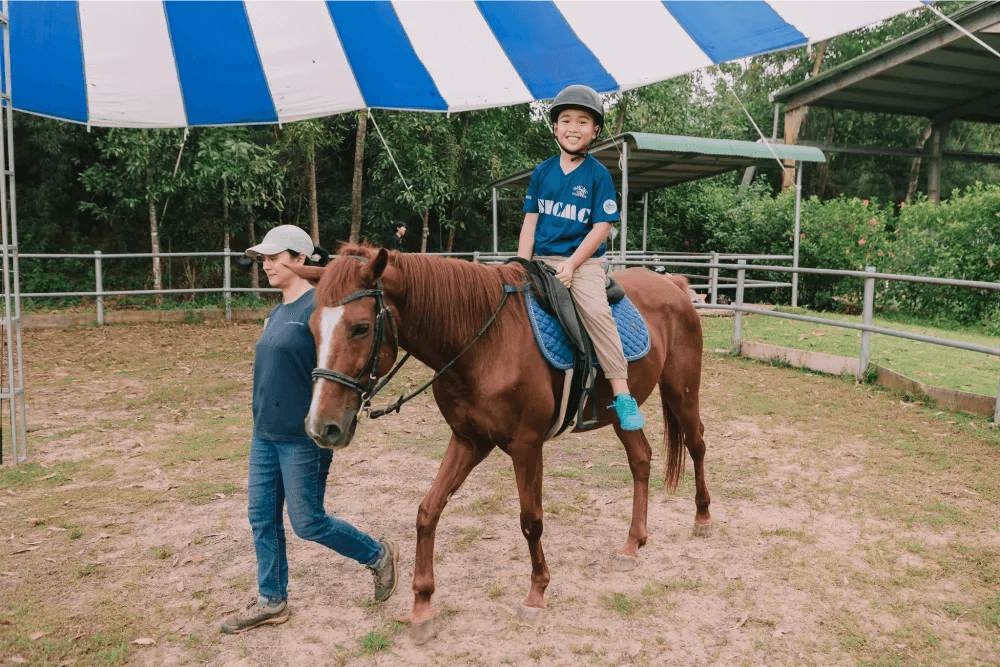
For imaginative and productive play, natural playgrounds offer easily accessible and plentiful natural loose materials, as well as plenty of area for manufactured and recyclable loose materials.
Playing in nature also boosts sun exposure and vitamin D production and lessens depressed symptoms. However, it’s essential to find a balance between sun exposure and skin protection to avoid harmful effects.
Furthermore, according to many studies (French, Ashby, Morgan, & Rose, 2013; He et al., 2015; P.-C. Wu, Tsai, Wu, Yang, & Kuo, 2013), children who attend more outdoor activities at school are less likely to be shortsighted.
6. Instill a Sense of Belonging and Responsibility
Kroencke et al. (2015) conducted research on fifth and sixth-grade students in Milwaukee and found that the more familiar children became with their neighborhood, the stronger their sense of place developed.
Besides, children’s pro-environmental attitudes and behaviors are greatly influenced by their experiences and education in nature. Over thirty studies have demonstrated that outdoor play influences adult attitudes and ideals toward the environment.
Chawla and Derr (2012) and Asah, Bengston, and Westphal (2011) discovered that participating in nature based activities boosts motivation and helps overcome obstacles. Positive experiences in natural settings can inspire lifelong conservation values.
How to Bring More Nature into Early Childhood Education
Nature based learning in early childhood programs can be enhanced by:
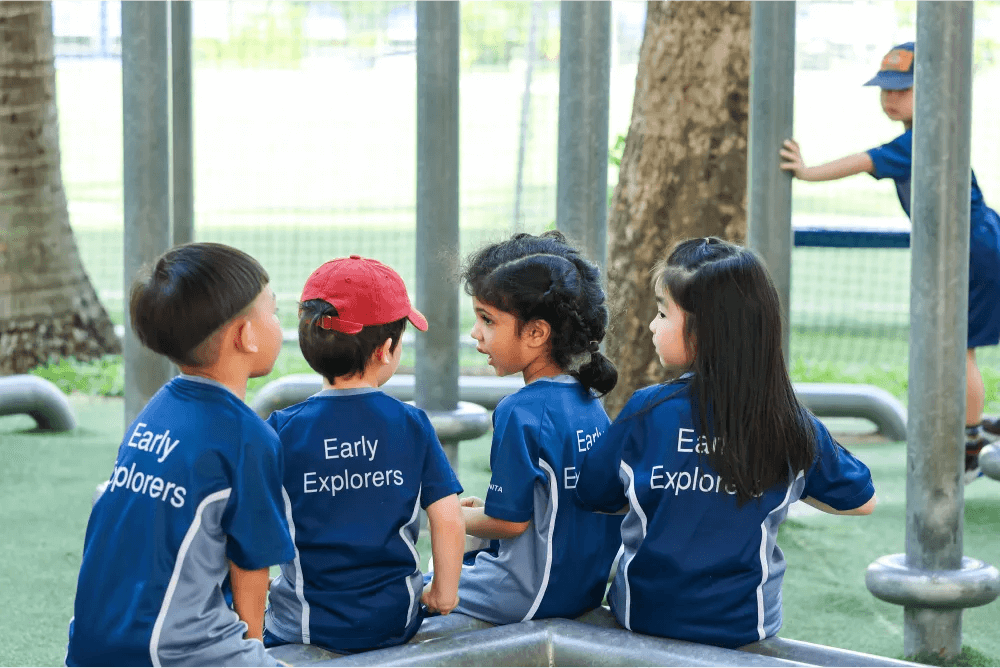
1. Set Up Suitable Outdoor Spaces for Children
One way to improve children’s learning ability is to turn outdoor space into a kid-friendly zone. A report from New America suggests that childcare facilities can improve outdoor play areas by investing in permanent centers tailored to children’s interests, such as sand and water areas, music walls, or play kitchens. These centers promote creativity, movement, and exploration during outdoor playtime.
ISHCMC’s outdoor education (OE) for primary students is a solid example of an evidence-based approach that positively impacts students’ agency, resilience, self-efficacy, ecological awareness, health, well-being, and leadership skills.
By engaging in immersive outdoor education experiences, students develop a connection to the natural world, aiming to take global, pragmatic, and ethical actions towards environmental value from both practical and moral perspectives.
2. Naturalize Outdoor Learning Spaces
Children need vitamin “G”. Incorporating trees, shrubs, vines, perennial plants, and edible plants provides them safe, ready-made access to green places, encouraging their interaction with nature.
The diverse array of plant life motivates children to experience nature in more ways and more frequently. Adopting naturalization in their outdoor learning environments improves children’s health and development.
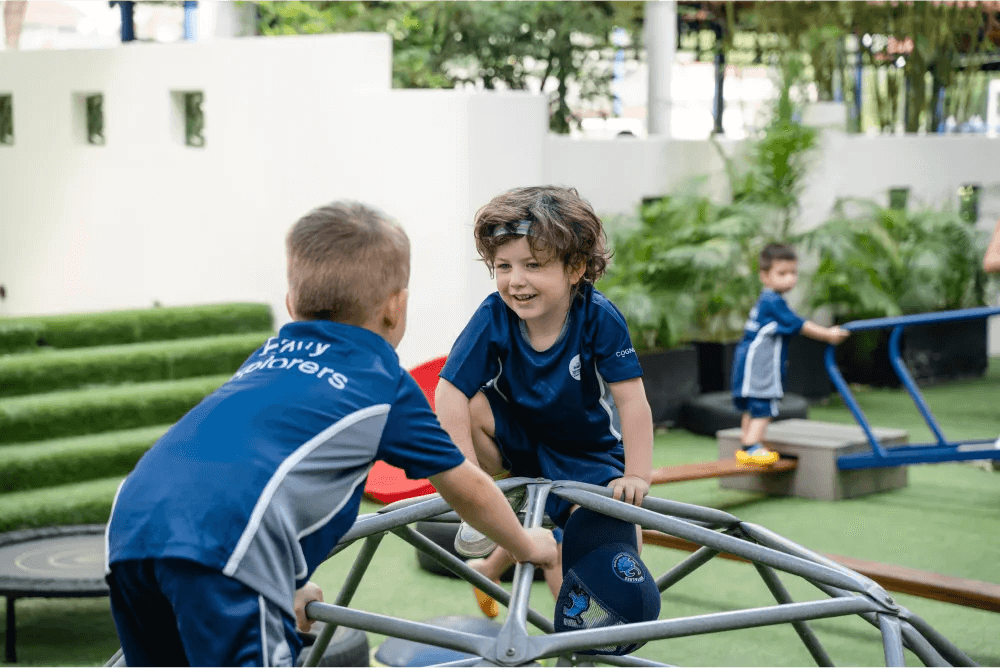
3. Schedule Outdoor Activities During Classes
Frequently conducting outdoor activities is a part of a kid’s comprehensive development. Teaching outdoors or bringing indoor things like books and art tools outside, etc., are ways to add natural elements into studying. Letting kids play freely between indoor and outdoor areas (under observation) also provides them more time to spend in nature.
4. Bring Natural Materials into Classrooms
Most programs are unable to build playgrounds with natural elements. Therefore, incorporating nature with alternatives such as gardening material boxes, where children can engage in planting, digging, or finding loose parts like pine branches, is a practical method. Teachers can also bring natural materials into the classroom to help children compare appearances, textures, and smells, fostering a greater understanding of nature.
FAQs About Nature Based Learning In Early Childhood
This approach is not new to educators and parents. Yet, there are related aspects that educators and parents might want to know to assist their children’s nature based learning.
1. What are the four core experiences that children need to develop?
They are motor, cognitive, social, and emotional skills. Since birth, these four skills have developed together as a whole piece of “global development” in a child.
Motor development involves gross and fine motor skills, with gross skills requiring larger muscles and fine skills requiring smaller muscles. As they mature, children gain balance, coordination, and agility that help them to master challenging motions and complete tasks on their own.
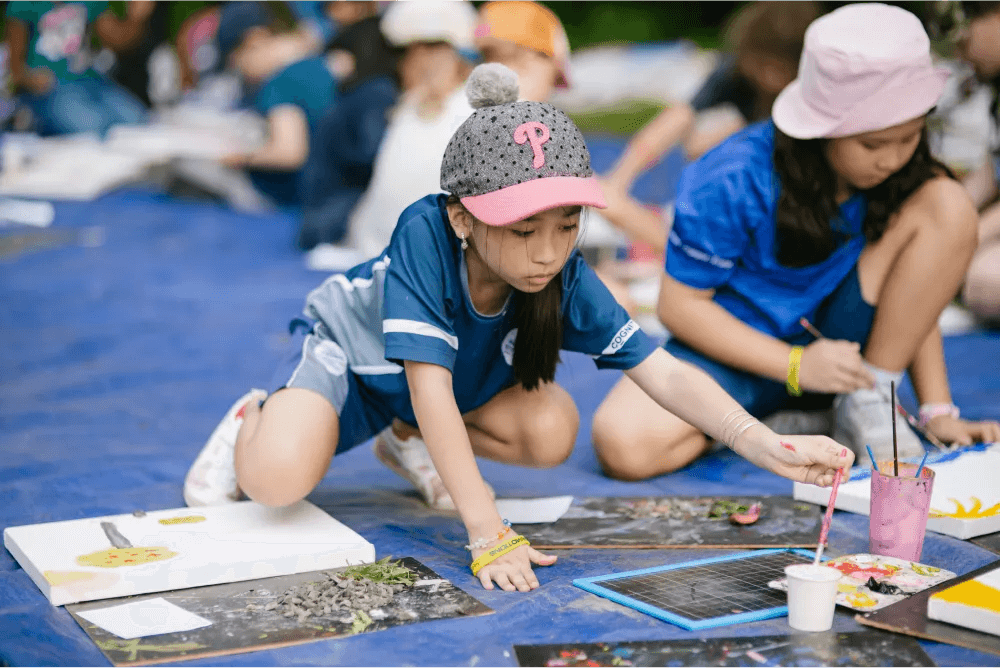
Cognitive abilities include thinking, memory, attention, reasoning, and planning, which children develop from birth. Meanwhile, children’s ability to express themselves, exercise self-control, and comprehend the emotions of others depends on their emotional development.
Social skills assist students in forming their relationships and living in society. The skills include sharing, waiting, politeness, collaboration, rules, compromises, and conflict resolution. Healthy development requires the fulfillment of the child’s physical and emotional needs.
2. What is the nature curriculum?
A nature curriculum is an educational approach that strongly emphasizes outdoor exploration, practical experiences, and close interaction with the natural world. Experiential learning, multimodal experiences, curriculum integration, environmental stewardship, child-led inquiry, and connections to the local community and culture are important components.
The great outdoors provides young learners with an unparalleled opportunity to observe, explore, and uncover the mysteries of the natural world. This natural environment functions as a dynamic learning lab, boosting comprehensive development.
The nature curriculum is designed to teach students about the natural world, with an emphasis on ecosystems, biodiversity, and conservation. It combines geography, biology, ecology, science, and environmental studies to help students become ecologically aware and responsible citizens.
3. What is an example of nature based learning in early childhood?
One ideal activity for nature-based early childhood education is gardening and planting. Teachers give basic information about the plant they are going to grow and what it needs, grow it in real life, and mark the development milestones as a reward. This will teach children about plant life cycles, growth, and care while fostering a sense of responsibility and connection to nature.
In addition, teachers can create group discussions or organize a workshop to encourage students to share their knowledge, observations, discoveries, and experiences. Students will also improve their social skills, such as communication and presentation, by presenting their plants.
Nurturing Young Minds Through Nature at ISHCMC
Understanding the advantages of this method, ISHCMC offers a progressive educational approach that is set within modern learning environments. We facilitate outdoor classroom spaces and incorporate environmental education into the curriculum to guarantee comprehensive development.
Our curriculum encourages curiosity, creativity, and a sense of wonder for the world via outdoor adventure, sensory-rich activities, and inquiry-based learning. At ISHCMC, children learn about ecological concepts, life cycles, ecosystems, and biodiversity through hands-on exploration and experiential learning activities.
ISHCMC educators support inquiry-based learning experiences by encouraging children to ask questions, make observations, and explore independently. This fosters critical thinking skills, problem-solving abilities, and curiosity about the world.
For students from Kindergarten to Grade 3, ISHCMC organizes half-day outdoor trips that introduce them to the wonders of nature. With such experiences, young learners could develop resilience and a deeper understanding of themselves, others, and the environment through immersive outdoor education integrated with their studies.
Join us at ISHCMC right now to experience the method of nature based learning in early childhood!
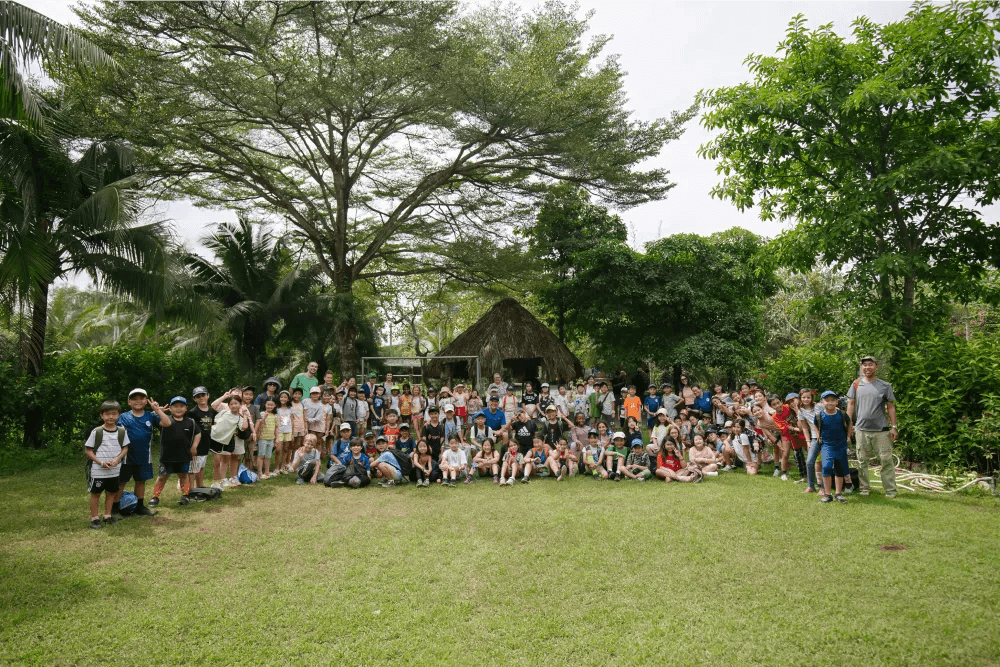
REFERENCES
Aggio, D., Smith, L., Fisher, A., & Hamer, M. (2015). Mothers’ perceived proximity to green space is associated with TV viewing time in children: the Growing Up in Scotland study. Preventive Medicine, 70, 46–49.
Asah, S. T., Bengston, D. N., & Westphal, L. M. (2011). The influence of childhood: Operational pathways to adulthood participation in nature-based activities. Environment and Behavior, 44(4), 545–569.
Balseviciene, B., Sinkariova, L., Grazuleviciene, R., Andrusaityte, S., Uzdanaviciute, I., Dedele, A., & Nieuwenhuijsen, M. (2014). Impact of residential greenness on preschool children’s emotional and behavioral problems. International Journal of Environmental Research and Public Health, 11(7), 6757–6770.
Dadvand, P., Nieuwenhuijsen, M. J., Esnaola, M., Forns, J., Basagaña, X., Alvarez-Pedrerol, M., … Sunyer, J. (2015). Green spaces and cognitive development in primary schoolchildren. Proceedings of the National Academy of Sciences of the United States of America, 112(26), 7937–7942.
Drown, K. K. C., & Christensen, K. M. (2014). Dramatic play affordances of natural and manufactured outdoor settings for preschool-aged children. Children, Youth and Environments, 24(2), 53.
Engelen, L., Bundy, A. C., Naughton, G., Simpson, J. M., Bauman, A., Ragen, J., … van der Ploeg, H. P. (2013). Increasing physical activity in young primary school children — it’s child’s play: A cluster randomised controlled trial. Preventive Medicine, 56(5), 319–325.
Flouri, E., Midouhas, E., & Joshi, H. (2014). The role of urban neighbourhood green space in children’s emotional and behavioural resilience. Journal of Environmental Psychology, 40, 179–186.
French, A. N., Ashby, R. S., Morgan, I. G., & Rose, K. A. (2013). Time outdoors and the prevention of myopia. Experimental Eye Research, 114, 58–68.
Gifford, R., & Chen, A. (2016). Children and nature: What we know and what we do not. Lawson Foundation.

